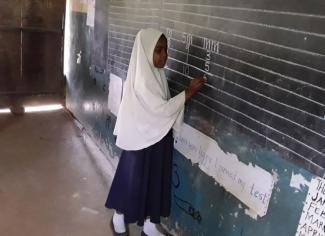Inclusion of girls in education helps transform nations, societies, communities and even villages. Educated girls are less likely to be caught in different socioeconomic traps, such as early marriage or an unplanned pregnancy, which have seriously affected many girls in countries like Tanzania.
Girls’ inclusion in education contributes to their healthy, safe and productive lives and provides them with opportunities to fulfill their full potential. Inclusion also strengthens their socioeconomic status and reduces inequality, which can enable women to earn a higher income and actively participate in democracy and decision-making, particularly when it comes to things that most affect them.
In Zanzibar, certain gender norms disadvantage girls in fairly accessing education. For example, it is common that girls use most of their time performing household chores while boys have more free time to play and study. Despite this hardship, girls often lead in classroom performance and serve as role models in supporting their peers.
Nadia is a 9-year-old girl in primary school in Zanzibar. She has led her class in performance from first grade to her current class of grade three. Most of the time, Nadia is called on to provide answers or model behaviors for her class when performing daily classroom practices, and she is always happy to support her fellow students in the classroom.
After class, Nadia was asked why she is always happy practicing and performing on the blackboard: “I really like to practice in front of the class because it gives me confidence in my studies.”
Mary and Nadia are classmates. Mary often receives learning support from Nadia. “Nadia is my best friend, and we live on the same street,” Mary said. “She is the best student in our class and always supports me in my studies at school and even at home.”
Fatma Ame Shomari, a third grade teacher and Head Teacher, says, “Nadia is one of our best girl students among many. She genuinely likes to volunteer and practice, which motivates her to understand her studies well. Nadia highlights and represents the capacity and strength of girls when included in education.”

USAID
